If you are considering getting a tattoo, you may be wondering “what does tattoo scarring look like?” Scarring is a common complication of the tattooing process, and it is important to understand how it works so you can be prepared. In this guide, we will break down the basics of tattoo scarring, including what it looks like, how it can be prevented, and how it can be treated. We will also provide some helpful tips and tricks to reduce the risk of scarring and ensure you get the best possible outcome.
Contents
Overview of Tattoo Scarring
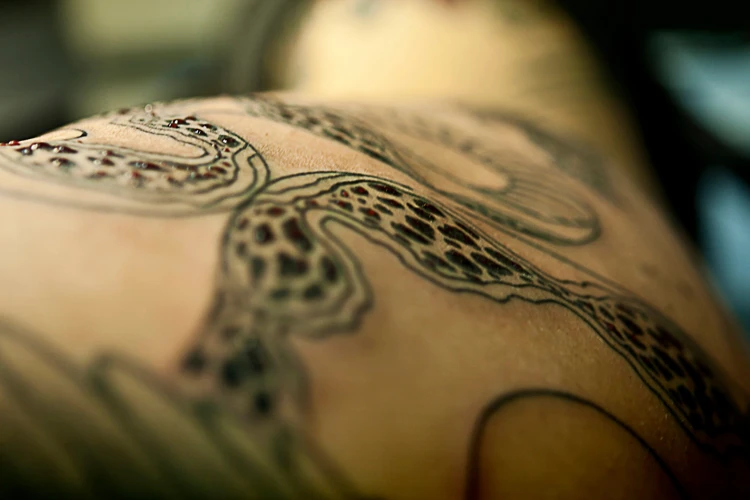
What Does Tattoo Scarring Look Like?
Tattoo scarring typically appears as raised, puffy, and/or discolored skin around the area of the tattoo. It can vary from being barely noticeable to being quite prominent. The discoloration of the skin can range from a light pink to a deep purple. In some cases, the skin may also be hard or lumpy.
Why Did My Tattoo Scar?
Tattoo scarring can occur for a variety of reasons. The most common cause is poor aftercare, such as not applying enough lotion or not applying it frequently enough. Other factors that can contribute to tattoo scarring include poor hygiene, using dirty needles, or using too much pressure during the tattooing process. Additionally, certain skin types are more prone to scarring than others, so be sure to discuss this with your tattoo artist before getting a tattoo.
How to Get Rid of Tattoo Scars
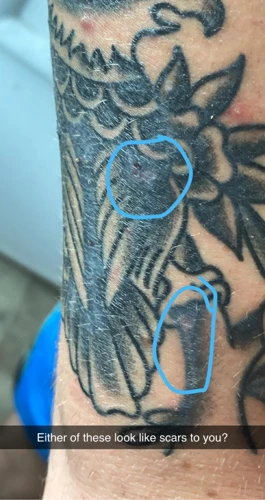
Tattoo scarring can be an unwelcome sight for many, but luckily, there are a few treatments available that can help reduce the appearance of scars. The following are the most common methods of tattoo scar removal:
Laser Treatments – Laser treatments are one of the most popular ways to reduce the visibility of tattoo scars. The laser is used to break up the scar tissue, helping to even out the skin’s appearance. Depending on the severity of the scarring, multiple sessions may be required.
Chemical Peels – Chemical peels use a combination of chemicals to exfoliate the skin, helping to reduce the appearance of tattoo scars. Peels can be used on both raised and sunken tattoo scars.
Dermabrasion – Dermabrasion is a method in which the skin is sanded down using a rotating device. This treatment is typically used for sunken scarring and can be used in conjunction with other treatments.
Injections – Injections, such as hyaluronic acid, can help to fill in sunken scars and reduce their visibility.
Scar Creams – There are a variety of topical creams available that can help reduce the appearance of tattoo scars. These creams often contain ingredients such as collagen or vitamin E to help break down scar tissue and promote healing.
Surgery – Surgery is an option for those looking to completely remove a tattoo scar. The procedure involves cutting out the scar tissue and stitching up the skin.
No matter which treatment you choose, it is important to understand that it may take several treatments or a combination of treatments to see results. It is also important to note that some scars may be permanent and cannot be removed. If you are considering a tattoo scar removal treatment, it is important to speak to a doctor or dermatologist to discuss the best option for you.
How to Fix Tattoo Scarring
- Tattoo Removal: This is the most common and effective way to reduce the appearance of scarring from a tattoo. Tattoo removal treatments can be painful and expensive, but they are the only way to completely remove a tattoo. Laser treatments are the most commonly used method, but there are other options available.
- Skin Grafting: This procedure involves replacing damaged skin with healthy skin from another area of the body. It can help to reduce the appearance of scarring and improve the overall look of the tattoo.
- Scar Revision Surgery: This is a type of plastic surgery that is used to correct and improve the appearance of a scar. It can be used to reduce the appearance of a scar caused by a tattoo.
- Fillers: Fillers are a type of injectable treatment that can be used to fill in deep scars and improve the appearance of a tattoo. Hyaluronic acid fillers are the most commonly used type of filler for tattoo scarring.
- Collagen Stimulators: These treatments stimulate the production of collagen in the skin, which can help to reduce the appearance of scars. They are often used in combination with other treatments for tattoo scarring.
- Laser Treatments: Laser treatments can be used to reduce the appearance of scarring and improve the overall look of a tattoo. They can be used to reduce the size of a scar or to lighten the color of the skin.
- Micro Needling: This is a type of treatment that involves using a series of tiny needles to create tiny punctures in the skin. This can help to reduce the appearance of scarring and can also help to improve the overall look of a tattoo.
- Chemical Peels: Chemical peels are a type of treatment that involves using a chemical solution to remove the top layer of skin. This can help to reduce the appearance of scarring and can also help to improve the overall look of a tattoo.
When You Get a Tattoo Removal Does it Scar?
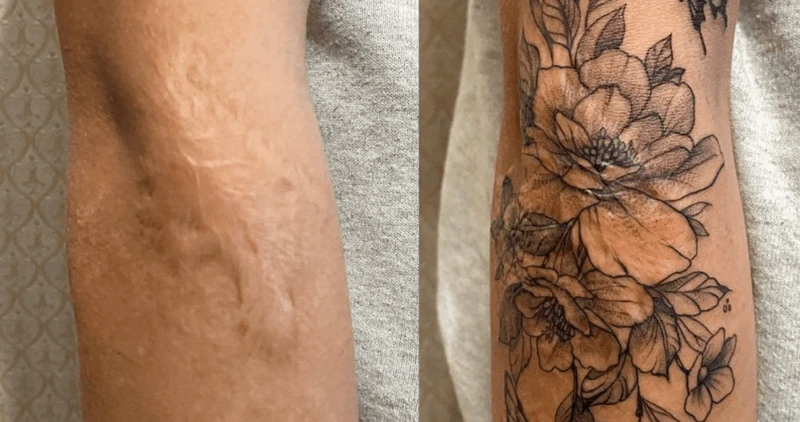
Tattoo removal can be a lengthy and costly process, but it is a great way to remove an unwanted tattoo. But, it is important to understand that it can result in scarring. Here is a closer look at what to expect when getting a tattoo removed:
- Scarring: Most people will experience some degree of scarring after they have a tattoo removed. This can take the form of raised or sunken scar tissue, discoloration, and/or texture changes. The amount of scarring will depend on the type of tattoo removal used and the size of the tattoo.
- Laser Removal: Laser removal is the most common method used to remove tattoos. It works by breaking up the pigment of the tattoo using a laser beam. Laser removal is not always successful and can result in scarring.
- Dermabrasion: Dermabrasion is a process that involves sanding down the top layers of skin to remove the tattoo. It is usually done with a rotating brush or diamond wheel. Dermabrasion can be very effective, but it can also cause significant scarring.
- Surgical Removal: In some cases, surgical removal may be necessary to remove a tattoo. During the procedure, a surgeon will excise the tattooed area of skin. This can cause significant scarring and is usually only recommended for smaller tattoos.
- Preventing Scarring: The best way to prevent scarring after tattoo removal is to follow the aftercare instructions provided by your doctor. This may include using a topical cream or ointment to keep the area moisturized and to prevent infection. Additionally, it is important to avoid sun exposure and to keep the area clean.
In conclusion, it is important to understand that getting a tattoo removed can result in scarring. The extent of the scarring will depend on the type of tattoo removal used, the size of the tattoo, and the individual’s healing process. Therefore, it is important to talk to a doctor before getting a tattoo removed and to follow the aftercare instructions provided.
What Causes Tattoo Pitting?
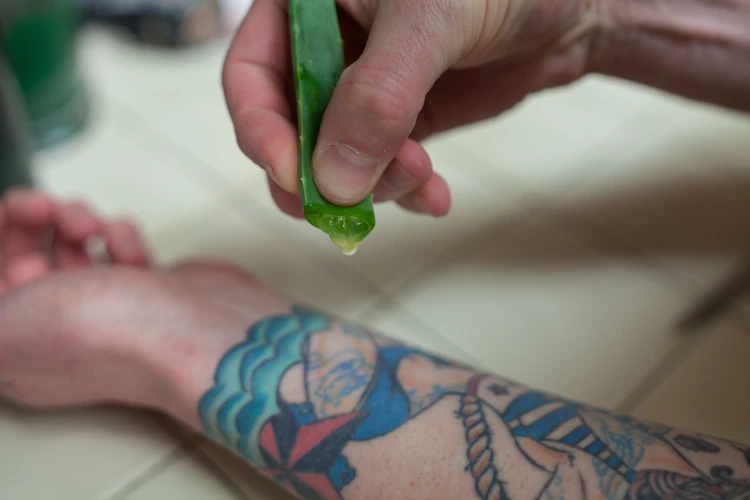
Tattoo pitting is a common form of scarring that occurs when the skin reacts to the ink used in a tattoo. It is a type of post-inflammatory hyperpigmentation, which is caused by an allergic reaction or injury to the skin. Here are some of the main causes of tattoo pitting:
- Infection: An infection in the skin can cause pitting and scarring of the tattoo. Infections can be caused by the needle, the ink, or poor hygiene practices.
- Allergic Reaction: Some people are allergic to certain inks or other components of the tattoo process. This can cause an allergic reaction, which can lead to pitting of the tattoo.
- Inadequate Aftercare: Proper aftercare is essential for maintaining the quality of a tattoo. Failure to follow aftercare instructions can lead to infection, which can lead to pitting of the tattoo.
- Poor Technique: If the tattoo artist is not experienced or trained properly, they may use inadequate techniques which can cause pitting. Poor technique can also cause uneven lines and other issues with the tattoo.
Tattoo pitting can be unsightly, but it can usually be treated with creams and ointments. It is important to take proper care of your tattoo to avoid any sort of scarring.
How to Prevent Tattoo Scarring
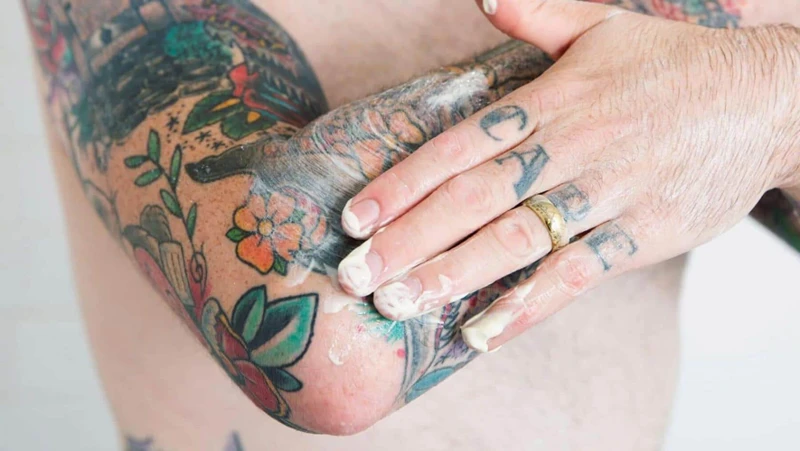
Choose an Experienced Tattoo Artist: An experienced tattoo artist will know the best techniques and use proper equipment to reduce the risk of scarring. Additionally, they will be able to tell you which areas of the body are more prone to scarring and suggest appropriate placement.
Ensure Cleanliness: Make sure all of the equipment used is sterilized and all needles are new. Ask for a new set of gloves for the artist to wear and make sure the area to be tattooed is thoroughly cleaned.
Avoid High Risk Areas: Areas of the body that are particularly prone to scarring are the hands, feet, face, and neck. If you are considering getting a tattoo in one of these areas, make sure you discuss potential risks with your tattoo artist.
Apply Aftercare Instructions: Once your tattoo is done, it’s important to follow your artist’s aftercare instructions. This includes avoiding direct sun exposure, keeping the area clean and moisturized, and avoiding picking or scratching the area.
Opt for Laser Removal: If you’re concerned about scarring from a tattoo, you may want to consider laser tattoo removal instead. A laser will remove the tattoo ink without causing any permanent damage to the skin.
Why Is My Tattoo Healing Like a Scar?
- Scarring During Healing: Scarring during healing is a common side-effect of getting a tattoo. During the healing process, the skin may become inflamed, red, and itchy. This inflammation can cause the skin to form a scab, which can increase the risk of scarring.
- Tattoo Placement: The placement of the tattoo can also affect the likelihood of scarring. Certain areas of the body are more susceptible to scarring than others, such as the inner wrist, inner elbow, and any area with thin skin.
- Infection: Infection can also lead to scarring. If the area is not kept clean and sanitized during the healing process, bacteria can enter the wound and cause an infection. This can lead to inflammation, scarring, and even worse, an abscess.
- Poor Aftercare: Poor aftercare can also increase the risk of scarring. If the area is not kept clean, moisturized, and protected from the sun, the skin can become dry and irritated, leading to scarring.
Scarring is a natural part of the healing process when it comes to tattoos, and it is important to be aware of the risks before getting inked. Proper aftercare and vigilance can help minimize the risk of scarring, but it is important to remember that scarring is a possibility, and some tattoos may heal with a scar.
Frequently Asked Questions
What are the Common Causes of Tattoo Scarring?
- Poor Aftercare: Not following the instructions provided by the tattoo artist for aftercare can lead to scarring, slow healing, and infection.
- Infection: Unsanitary tools, poor sterilization, and an unclean environment can lead to a higher risk of infection and scarring.
- Allergic Reaction: Allergic reactions can cause the body to reject the pigments or cause an infection, resulting in the tattoo scarring.
- Removal Techniques: Poor removal techniques, such as laser removal, can cause scarring or discoloration of the skin.
- Skin Type: Skin type can also play a role in the risk of scarring. People with more sensitive skin are more likely to experience scarring after getting a tattoo.
Are Some Parts of the Body More Prone to Scarring After a Tattoo?
Certain parts of the body may be more prone to tattoo scarring due to their skin type and the amount of movement of the skin in those areas. For example, areas with thinner skin, such as the wrist, elbow, ankle, and neck, may be more prone to scarring. Similarly, areas with more movement, such as the shoulder, chest, and lower back, may be more prone to scarring due to the increased friction. To reduce the chance of scarring, it is best to choose a tattoo artist with experience in the area of the body where the tattoo is being placed.
Is there any way to prevent or minimize the risk of scarring after getting a tattoo?
Using a Professional Artist: Finding a professional, experienced tattoo artist is the best way to minimize the risk of scarring. Professional artists are more likely to use sterile equipment and follow proper hygiene protocols.
Proper Aftercare: Taking proper care of a new tattoo is essential to reduce the risk of scarring. This includes keeping the area clean, moisturizing with a fragrance-free lotion, avoiding sun exposure, and following any instructions from the artist.
Non-toxic Ink: Using non-toxic inks can reduce the risk of inflammation and scarring. Natural inks, such as plant-based and mineral-based inks, are safer alternatives to traditional inks.
Keeping the Area Clean: Keeping the area clean is an important part of tattoo aftercare. This includes washing the area with a mild, fragrance-free soap and avoiding any unnecessary contact with the area.
Proper Placement: Placing a tattoo in an area that is less likely to stretch or move can reduce the risk of scarring. Areas such as the upper arms, calves, and back are less likely to stretch, and therefore may be less likely to scar.
Avoiding Aggressive Treatments: Aggressive treatments such as dermabrasion, laser treatments, and chemical peels can increase the risk of scarring. If scarring does occur, these treatments may not be effective in reducing the appearance of the scar.
What are the Most Effective Treatments for Tattoo Scarring?
1. Microdermabrasion – Microdermabrasion is a minimally invasive procedure which uses tiny crystals to exfoliate the skin and remove the scarring. It can be used to reduce the appearance of both surface-level and deep scarring.
2. Laser Skin Resurfacing – Laser skin resurfacing is a more aggressive treatment which uses a laser to remove layers of skin, allowing healthy skin to replace the scarred tissue. It is a highly effective treatment for deep scarring.
3. Dermabrasion – Dermabrasion is a technique which uses a specialized tool to sand down the skin, removing the scarred tissue and allowing healthy skin to take its place.
4. Punch Techniques – Punch techniques use a specialized tool to remove the scarred tissue and allow healthy skin to replace it.
5. Cortisone Injections – Cortisone injections are used to reduce inflammation and improve the appearance of scarring.
6. Skin Grafts – Skin grafts involve taking a piece of healthy skin from another area of the body and transplanting it over the scarred tissue. This is the most effective treatment for deep scarring.
Is it Possible to Completely Remove Tattoo Scarring?
Tattoo scarring can be a disheartening sight for many, especially those whose tattoos have been inked for a long time. But it’s important to understand that tattoo scarring is a normal part of the tattooing process and that there are ways to manage it.
Complete removal of tattoo scarring is possible, but it requires patience, diligence, and professional help. Here are some steps to consider if you’re looking to remove tattoo scarring:
- Consult with a professional: Before undergoing any treatment, it’s best to consult with a professional. A skin doctor or dermatologist can assess the extent of the scarring and recommend the best course of action.
- Laser tattoo removal: Laser tattoo removal is one of the most common treatments for tattoo scarring. It involves using a laser to break down the pigments of the tattoo, which helps to reduce the appearance of scarring. Depending on the extent of the scarring, multiple sessions may be required.
- Dermabrasion: Dermabrasion is a type of procedure that involves using a tool to remove the top layer of skin. This can help to reduce the appearance of scarring, but it may also cause some skin irritation. It’s important to consult with a professional before undergoing this procedure.
- Creams and ointments: There are a variety of creams and ointments available on the market that can help to reduce the appearance of tattoo scarring. It’s important to consult with a professional to determine which product is best for your particular situation.
- Surgery: In some cases, surgery may be required to completely remove tattoo scarring. This type of procedure is typically done in a hospital and requires anesthesia. It’s important to consult with a professional before undergoing this procedure.
While it is possible to completely remove tattoo scarring, it’s important to remember that it may take some time and multiple treatments before you see the results you desire. It’s also important to be aware of the risks associated with any type of treatment and to consult with a professional before undergoing any procedure.
Conclusion
Tattoo scarring can have a range of appearances and can be caused by a variety of different factors. It is important to understand the potential risks of scarring before getting a tattoo, and to take the necessary steps to reduce the risk of scarring. Furthermore, it is important to seek medical attention if tattoo scarring occurs, as it can have a significant impact on the appearance of a tattoo.